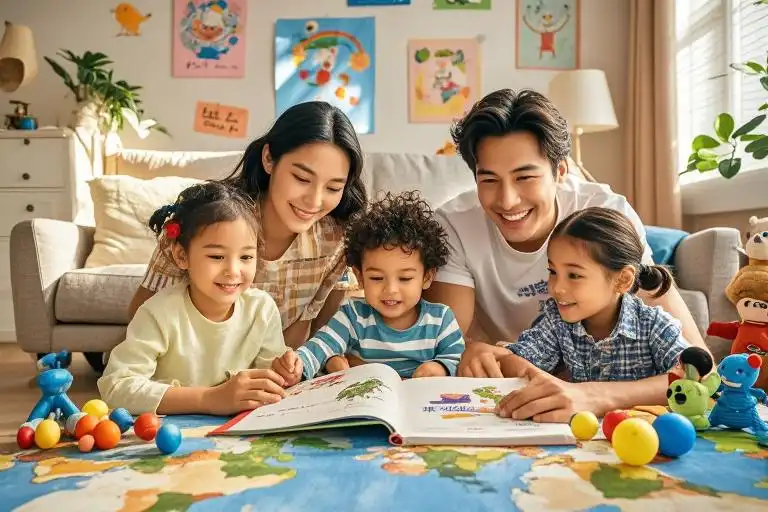A 3-year-old effortlessly switches between asking Grandma for galletas in Spanish and requesting a “blue crayon” from her preschool teacher. For families raising bilingual children, these moments spark both pride and anxiety. Will the languages stick? Are we doing enough?
The truth is, every child is born with a linguistic superpower. As King & Mackey revealed in their groundbreaking 2007 study, babies arrive as “citizens of the world,” biologically primed to master any of Earth’s 6,000 languages. But here’s the twist—simply growing up hearing multiple languages doesn’t guarantee fluency. I’ve seen families where siblings develop wildly different bilingual abilities despite identical environments. Why? Let’s unpack this puzzle together.
The Brain’s Hidden Bilingual Blueprint
New neuroscience shows infants’ brains light up like carnival rides when exposed to multiple languages. Between 0-7 years, their neural pathways are especially sponge-like, absorbing accents and grammar rules with astonishing ease. But this window isn’t magic—it’s malleable.
Try this experiment tonight:
- Play a Mandarin lullaby during bath time
- Read a French picture book before bed
- Chat about tomorrow’s plans in your heritage language
You’ve just activated what researchers call the “code-switching advantage.” Kids who regularly toggle between languages often outperform monolingual peers in problem-solving tasks. That bilingual edge? It’s real—but fragile.
When Good Intentions Collide With Reality
Maria, a second-generation Mexican-American mom, shared her struggle: “My parents only taught me Spanish through guilt—‘Don’t forget your roots!’ Now my son rebels when I speak it.” Her story reveals a critical insight: Emotional safety fuels language retention more than flashcards ever could.
Common roadblocks I help families navigate:
- The 80/20 Rule: Children need meaningful interaction in both languages—not just passive exposure
- The Identity Tightrope: Balancing “school language” prestige with heritage language pride
- Grandparent Dynamics: When elders criticize accent flaws instead of celebrating effort
Your Bilingual Success Toolkit
Let’s transform theory into action with these battle-tested strategies:
1. The “Language Time Zones” Hack
Designate specific contexts for each language:
- Breakfast: Heritage language
- After-school play: Community language
- Weekend movies: Alternate weekly between languages
2. Mistake Magic
When your child mixes grammar rules (e.g., “I goed al parque”), celebrate it! Code-switching errors signal active language processing. Respond with modeled corrections: “You WENT to the park? ¡Qué divertido!”
3. Culture-Infused Learning
Bake churros while naming ingredients in Spanish. Count maple seeds during nature walks in French. Language thrives when tied to joyful experiences.
4. The “Two Yeses” Rule
For conflicted families:
- Yes to screen time—if it’s a bilingual cartoon
- Yes to toys—if they prompt language games (e.g., multilingual puzzle apps)
When Progress Feels Slow: A Pep Talk
Last month, I met a dad near tears because his daughter “only understands Danish.” Six weeks after implementing contextual language zones? She started translating for her monolingual cousin. Small, consistent efforts compound dramatically.
Remember:
- Bilingualism isn’t all-or-nothing—even partial fluency enriches lives
- Language “refusal” phases usually pass with gentle persistence
- Your family’s unique mix is valid—there’s no single “right” way
The Lifelong Gift You’re Building
Beyond job prospects and test scores, bilingualism gifts children with:
- Sharper conflict-resolution skills (they literally think in multiple perspectives!)
- Deeper empathy across cultural divides
- A portable sense of belonging in our globalized world
As you navigate bedtime stories and teenage eye-rolls, know this: You’re not just teaching words—you’re wiring brains for flexibility, nurturing hearts for connection, and crafting identities that can dance between worlds. That’s worth every messy, magnificent moment of the journey.

